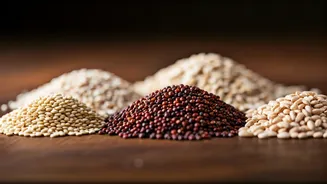Diabetes and Yoga
Diabetes, a chronic metabolic disorder, is characterized by elevated blood sugar levels, which can lead to various complications. It's often managed through
medication, diet, and exercise. Yoga has emerged as a complementary practice to support diabetes management. Certain yoga asanas can help improve insulin sensitivity, regulate blood sugar levels, reduce stress, and improve overall health. These asanas target different areas of the body, promoting physical and mental well-being, while offering a holistic approach to diabetes care. Regular practice, coupled with a healthy lifestyle, can significantly improve the quality of life for individuals with diabetes. It's essential, however, to consult with a healthcare professional before beginning any new exercise routine, especially when dealing with a chronic condition like diabetes. By combining these practices, individuals can achieve better control of their blood sugar levels and promote a healthier lifestyle.
Tadasana (Mountain Pose)
Tadasana, or the Mountain Pose, serves as a fundamental asana in yoga. It establishes a strong foundation and promotes stability. While seemingly simple, Tadasana activates various muscle groups and improves posture, which can indirectly aid in diabetes management. This pose cultivates body awareness and balance, helping reduce stress, a known factor that can influence blood sugar levels. To practice Tadasana, stand with your feet together or slightly apart, arms at your sides, and engage your core muscles. Maintain a straight spine, keeping your shoulders relaxed and your gaze forward. Breathe deeply, focusing on the alignment of your body from head to toe. This posture can be practiced at any time, promoting a sense of grounding and preparedness. Practicing Tadasana regularly can contribute to an enhanced sense of well-being, and it helps to establish a base for other yoga postures, making it a valuable starting point in your diabetes management routine.
Adho Mukha Svanasana
Adho Mukha Svanasana, or Downward-Facing Dog, is a rejuvenating yoga posture known for its multiple benefits, which also includes improving diabetes management. This asana enhances blood circulation, which helps improve the function of vital organs, including the pancreas, which is directly linked to insulin production. The inverted nature of this pose encourages fresh blood flow to the brain, alleviating stress, and promoting relaxation—both crucial elements for people dealing with diabetes. To practice this, start on your hands and knees, with your hands shoulder-width apart and knees hip-width apart. Lift your hips up and back, forming an inverted V-shape with your body. Press through your palms and keep your spine elongated, allowing your head to hang freely between your arms. Downward-Facing Dog offers physical and mental benefits that support better diabetes control. In addition to supporting insulin production, it also helps reduce stress and promote relaxation, which collectively enhances overall well-being.
Paschimottanasana
Paschimottanasana, often called the Seated Forward Bend, is known for its ability to stimulate the abdominal organs, which can be useful in supporting better diabetes management. The pose stretches the pancreas, potentially helping to increase insulin production and improve the processing of glucose in the body. Furthermore, this forward bend calms the mind and reduces stress, which, in turn, helps maintain healthy blood sugar levels. To practice Paschimottanasana, sit with your legs extended, keeping your spine straight. Inhale deeply, and as you exhale, bend forward from your hips, reaching towards your toes while keeping your back straight. If you can't reach your toes, it's fine to hold onto your shins or ankles. Regular practice of this asana can improve digestion and reduce anxiety, creating a positive impact on both physical and mental health. Paschimottanasana complements other practices in this series, encouraging relaxation and a healthy lifestyle.
Bhujangasana (Cobra Pose)
Bhujangasana, or the Cobra Pose, is beneficial for stimulating abdominal organs and improving blood circulation. These effects can assist in regulating blood sugar levels and improving diabetes management. This posture strengthens the spine and enhances flexibility, while simultaneously massaging the abdominal area, including the pancreas, thus helping improve the efficiency of insulin production. To perform the Cobra Pose, lie on your stomach with your hands under your shoulders. Press into your hands to lift your chest off the ground, keeping your elbows close to your body and your shoulders relaxed. This pose promotes better blood circulation and reduces stress, aiding in an all-encompassing strategy for diabetes management. By routinely incorporating Bhujangasana into your exercise, you can develop both physical and mental health, therefore assisting your pursuit of holistic well-being.
Dhanurasana (Bow Pose)
Dhanurasana, or the Bow Pose, is another powerful yoga asana that assists in improving diabetes management by stimulating the digestive system and enhancing metabolism. This pose massages abdominal organs, including the pancreas, which aids in the effective functioning of insulin production. The backbend also boosts energy levels and decreases stress, both crucial factors in managing diabetes. To practice Dhanurasana, lie on your stomach and bend your knees, bringing your heels toward your buttocks. Reach back and hold your ankles with your hands. Inhale and lift your chest and legs off the ground, forming a bow shape. Dhanurasana not only helps regulate blood sugar levels but also boosts energy levels, and reduces stress, which are crucial for a healthy lifestyle. Including this asana in your routine contributes to an all-encompassing method for diabetes management, leading to improved physical and mental well-being.














